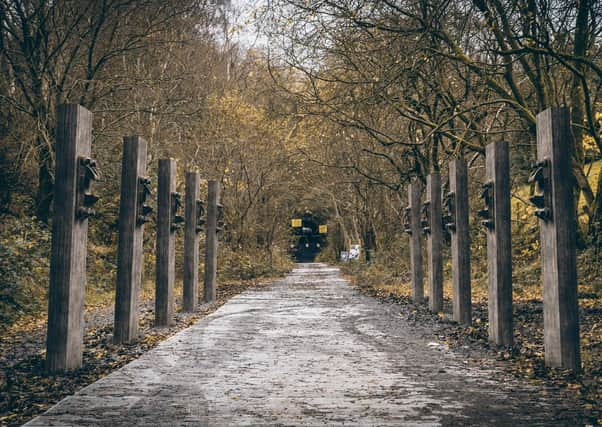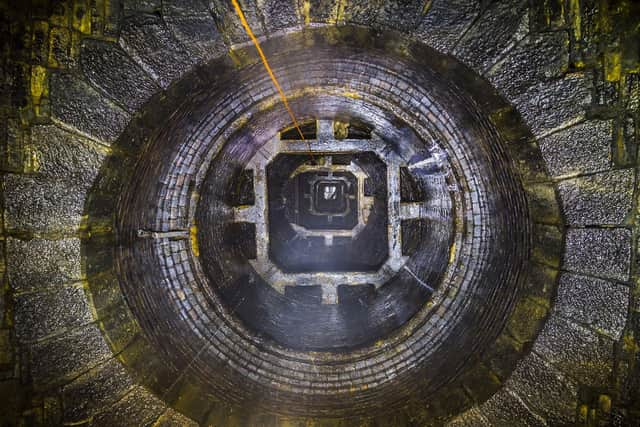Plans revealed for navvy memorial at Queensbury Tunnel


Work on Queensbury Tunnel began in May 1874 when navvies started to sink a shaft close to its north end. Around 600 men were employed on the project which involved the excavation of 180,000 cubic yards of rock as well as the manufacture and placement of over seven million bricks to form the arch.
Progress was significantly delayed by the volume of groundwater entering the workings. Pumps at five of the seven construction shafts removed 63,000 gallons of water every hour. The 1.4-mile long engineering feat was eventually completed in July 1878, more than two years after the date specified in the contract.
Advertisement
Hide AdAdvertisement
Hide AdThe greatest cost was borne by the workforce; dozens of appalling injuries were overshadowed by ten deaths. The youngest casualty, 25-year-old Frederick Goulding, was crushed between a wagon and a large timber; the oldest was John Swire, 44, who was run over by wagons in the tunnel’s southern approach cutting. Newlywed Captain Pickles was the last to lose his life in June 1877 when he was struck on the head by a half-ton roof support. Others succumbed to explosions, drownings and falls at the shafts.


To commemorate the navvies, the Queensbury Tunnel Society plans to erect a memorial comprising two rows of railway sleepers - one for each of the ten men - which will stand either side of the path connecting the Great Northern Railway Trail to the tunnel entrance. The Society has received an offer of help from the Keighley & Worth Valley Railway and is also exploring the practicality of salvaging a collection of sleepers from a tunnel on the former Bradford to Thornton line.
Norah McWilliam, leader of the Society, said: “The experiences of these men are beyond the comprehension of anyone in the 21st Century. Although they were paid comparatively well, the risks they faced were overwhelming. Every shift could realistically be their last.
“Of the navvies involved in construction, one in every 60 lost their lives; even more would have suffered life-changing injuries. And every accident brought with it the threat of destitution for the family as there was no financial support from the companies involved.
Advertisement
Hide AdAdvertisement
Hide Ad“Although there were basic safeguards, health and safety simply didn’t exist as we now know it. Almost every construction activity was perilous - the use of explosives, excavating rock overhead; it was very difficult to control the risks associated with tunnelling in the Victorian era.
“What we fail to appreciate when we’re sitting in comfort on today’s modern trains is that the infrastructure we’re travelling on, through or over was mostly built 140+ years ago. We owe these men a huge debt for their determination in gifting us our railway network against the odds. The very least we can do is pause to reflect on the sacrifices they made.
“Hopefully our memorial will serve as a focus for those reflections.”
Comment Guidelines
National World encourages reader discussion on our stories. User feedback, insights and back-and-forth exchanges add a rich layer of context to reporting. Please review our Community Guidelines before commenting.